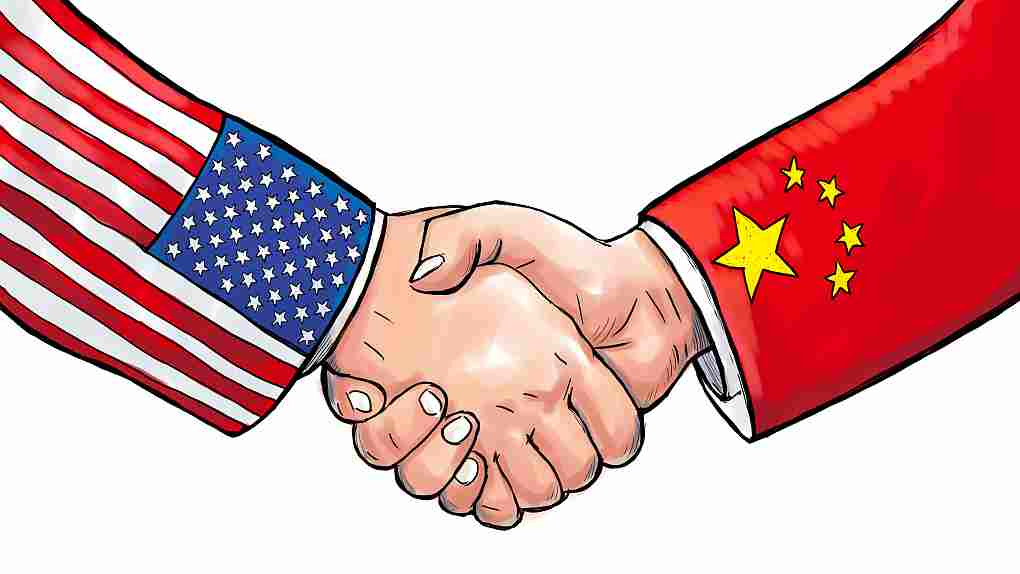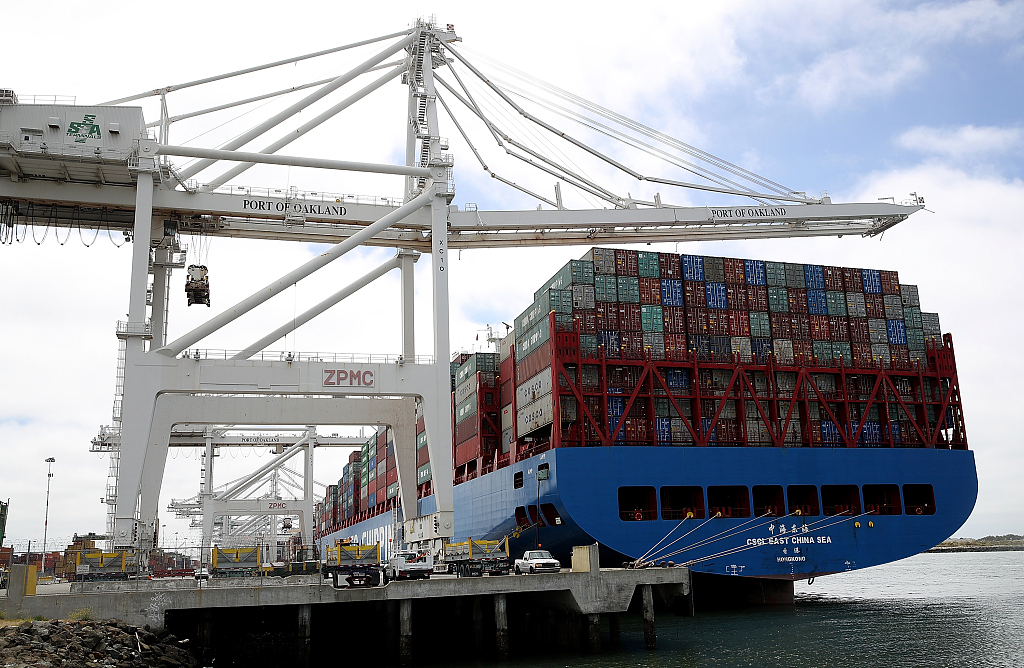
Editor's note: Tom Fowdy graduated from Oxford University's China Studies Program and majored in politics at Durham University. He writes about international relations focusing on China and the Democratic People's Republic of Korea. The article reflects the author's opinions and not necessarily the views of CGTN.
Last week when a last-minute preliminary trade agreement was declared between the United States and China, international markets were relieved. Wall Street has surged while the Shanghai Composite has also made meaningful gains. The stabilization of trade tensions, the abolition of pending tariffs and the reduction of others, have given investors at least a dosage of some certainty and the assurance further disruption to the global economy can be avoided for least the immediate future.
Meanwhile, China's own economy was already beginning to show some bright spots. Recently published data showed that in November industrial production increased by 6.2 percent, retail sales climbed by 8 percent and fixed asset investment grew by 5.2 percent.
The former two numbers beat expectations from industry observers, adding to an already noted increase in manufacturing which was the highest since 2016. As Bloomberg's editorial states: "The November activity data showed a decent rebound in production and demand, reflecting effects of supportive policy and favorable seasonal factors."
Given these factors already came into play before the deal was announced, it is fair to rule that China's economy had already "hit the bottom" from the impact of the trade war and will now have better optimistic prospects going into 2020.
Besides offering market confidence, the deal in practice offers space for China's export growth to rebound; increased market access for American firms will increase inbound investment, while new pork purchases can control domestic prices and bring down inflation.
Nevertheless, securing a phase two agreement must remain a priority if Beijing is to supersede the effects of the trade war.
First of all, the deal is important for China's economy because as noted above, it brings needed stability, confidence and certainty. Investor and business decision making follow these factors carefully and as the trade war continued to escalate, these variables amplified and thus created grave risks as to how severe the situation might become and its implications on businesses.
However, now that a "phase one deal" has been secured, the trade war is finally given a platform of stability as the two parties work on a solution, and not escalation. Therefore, even if some tariffs remain, businesses are given a clear sense of direction, surety and boundary which thus induces confidence in what can be invested in without fear of China-U.S. economic relations further destabilizing.
From this backdrop, China's export growth is likely to rebound, with continued gains in manufacturing and industrial production. Chinese factories and enterprises which were about to be hit with new tariffs no longer face uncertainty and in tandem, American businesses who are relying on these supply chains can now continue pursuing their orders without disruption, as well as other overseas customers who may have lost confidence in Chinese suppliers.
This includes big companies like Apple, whom if slapped with new levies would suffer immense consequences.

The Hong Kong-based CSCL East China Sea container ship berths at the Port of Oakland in Oakland, California, June 20, 2018. /VCG Photo
The Hong Kong-based CSCL East China Sea container ship berths at the Port of Oakland in Oakland, California, June 20, 2018. /VCG Photo
In addition, with tariffs on over 150 billion U.S. dollars of goods reduced from 15 percent to 7.5 percent, some U.S. companies may take their chances on these items again as the levy will not make them more expensive than other markets.
Thirdly, the deal will boost China's economy through the new market provisions it offers to American businesses. Although somewhat unspecified in detail, U.S. Trade Representative Robert Lighthizer stated China would also incorporate a greater role for American companies in its own financial markets, thus providing more access.
This inevitably means more U.S. capital can enter China's economy, boosting financial services, lending and thus outright investment. This is critical progress given some U.S. China hawks wanted to decouple the country's financial markets outright.
Finally, increased U.S. agricultural imports will bring pork prices under control, with prices having surged in the aftermath of the African swine fever. This will keep inflation down, prevent a knock on impact on all other food products and thus prevent consumers from being squeezed. While the U.S. demand for agricultural purchases was extensive, nevertheless there is some economic benefit to it after all.
Therefore, despite the skepticism of some, there is plenty about the phase one China-U.S. trade agreement which heralds good news for the country's economy. In the short term, it creates confidence, certainty and prevents things falling off a cliff, which in turn gives space for China's manufacturing and industries to rebound and adapt to the new environment.
While achieving phase two now becomes a critical priority to ensure sustained progress, nevertheless everyone should be able to deduce now there will be no "economic apocalypse" in China – the economy is in stable shape and will only better from this.
(If you want to contribute and have specific expertise, please contact us at opinions@cgtn.com.)